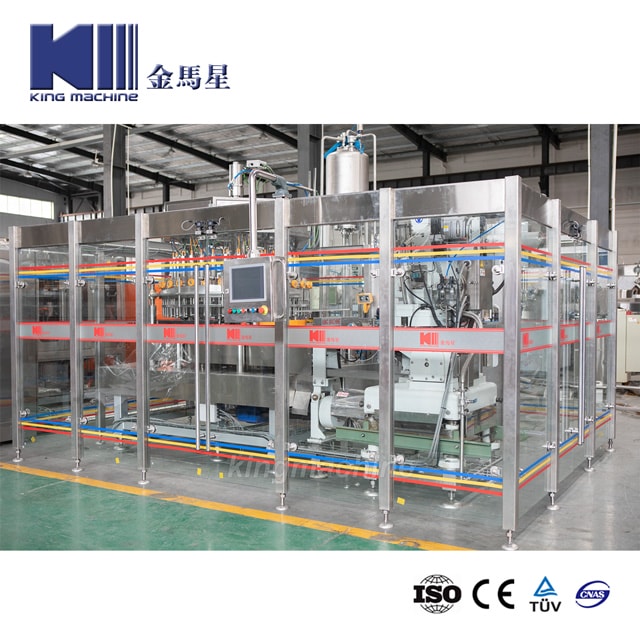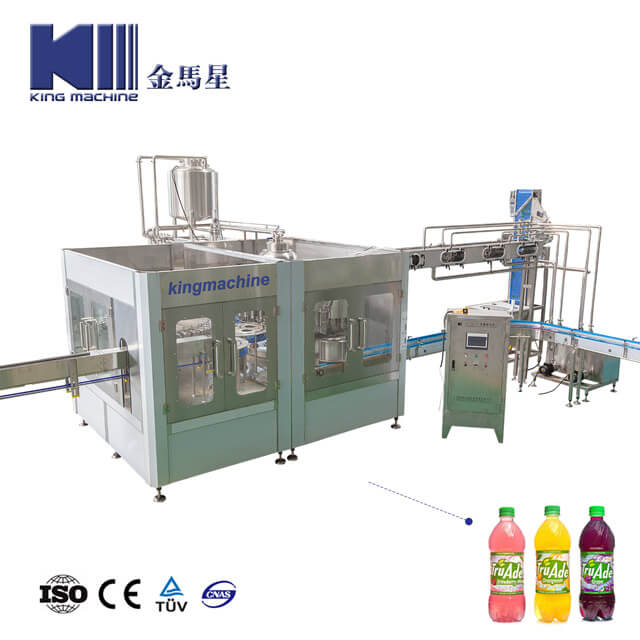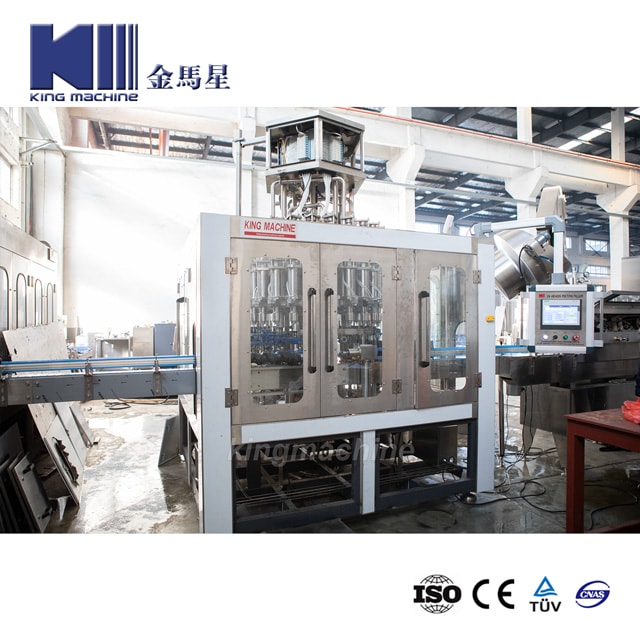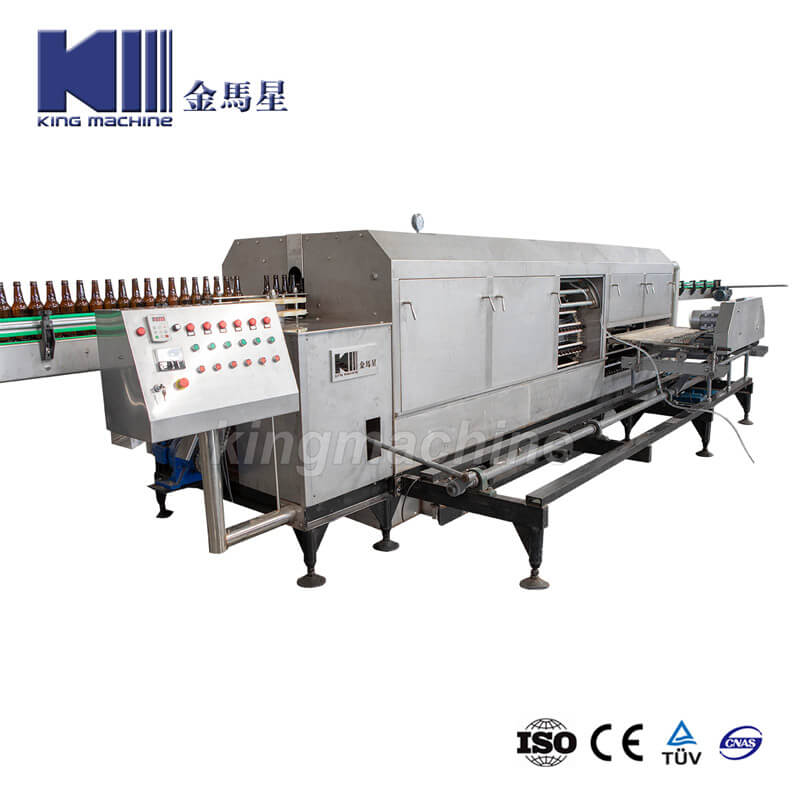In the beverage industry, the efficiency of production lines heavily relies on the performance of beverage filling machines. These machines play a pivotal role in ensuring that products are filled accurately, quickly, and efficiently while maintaining product quality. As beverage producers scale up their operations, choosing the right filling machine is crucial. The two most common types of filling machines are automated and semi-automated systems, each with distinct features, benefits, and drawbacks. This article aims to help manufacturers and beverage producers understand the key differences between automated and semi-automated beverage filling machines, so they can make the right decision based on their production needs.

1. What Are Beverage Filling Machines?
Beverage filling machines are essential equipment in the packaging process of the beverage industry. They are designed to efficiently fill various types of containers—such as bottles, cans, and pouches—while ensuring consistent quality and precision. These machines are integral to production lines, as they streamline the filling process and enable large-scale manufacturing.
Filling machines can process a wide range of beverages, including:
Carbonated drinks (sodas, sparkling water)
Non-carbonated beverages (juices, teas, bottled water)
Dairy products (milk, yogurt drinks)
Alcoholic beverages (beer, wine) Each type of beverage requires specialized filling technology to handle factors like carbonation, viscosity, and temperature.
2. What Are Automated Beverage Filling Machines?
Automated beverage filling machines are fully mechanized systems that handle all aspects of the filling process without human intervention. These machines are designed to operate continuously with minimal oversight, often integrating with other automated systems like labeling and capping for a fully streamlined production line.
Key Features of Automated Beverage Filling Machines:
Fully automated processes: Automated filling machines manage every step of the filling process, from the placement of containers to the final packaging.
High production capacity: These machines are built for high-volume production, ensuring fast, continuous output.
Integration with other automated systems: They often connect seamlessly with labeling, capping, and other packaging systems, allowing for full automation of the production line.
Benefits of Automated Beverage Filling Machines:
Faster production times: With minimal human involvement, automated machines can operate at much higher speeds, increasing overall output.
Reduced human error: Automation leads to fewer mistakes and inconsistencies in the filling process.
Consistent product quality: Automated systems deliver high precision, ensuring uniformity in the filled quantity and quality.
Labor cost savings: By reducing the need for manual labor, automated systems can help lower long-term operational costs.
Drawbacks:
Higher upfront investment: Automated filling machines generally have a larger initial cost compared to semi-automated systems.
Complex maintenance: These systems often require specialized technicians for maintenance, which can be costly and time-consuming.
Limited flexibility: Automated systems may struggle to handle different bottle types or sizes without significant modifications.

3. What Are Semi-Automated Beverage Filling Machines?
Semi-automated filling machines require some level of human intervention during the filling process. While they automate certain steps of the process, operators are still needed to monitor and manage specific tasks, making them ideal for smaller-scale or more flexible production runs.
Key Features of Semi-Automated Beverage Filling Machines:
Requires human intervention: Operators must oversee certain stages of the process, such as placing containers or adjusting settings.
Can operate at lower speeds: Semi-automated machines typically operate at a slower pace compared to fully automated systems.
Typically used for smaller-scale production: These machines are ideal for businesses that require versatility, like those producing multiple beverage types or limited runs.
Benefits of Semi-Automated Beverage Filling Machines:
Lower initial investment: Semi-automated systems are less expensive upfront than fully automated options.
Flexibility in production runs: These systems are more adaptable and can easily switch between different bottle types, sizes, or beverage products.
Easier maintenance and troubleshooting: Maintenance is generally simpler and more cost-effective, as it often requires less technical expertise.
Drawbacks:
Higher labor costs: The need for human operators increases labor costs compared to fully automated systems.
Less consistency: With human involvement, the potential for errors or inconsistencies in filling can increase.
Slower production speed: Since human operators are involved, production speeds are generally slower compared to automated systems.
4. Key Factors to Consider When Choosing Between Automated and Semi-Automated Systems
Production Volume:
High-volume production lines will benefit from automated filling machines due to their speed and efficiency. For smaller operations or lower-volume production, semi-automated machines offer flexibility and cost savings.
Budget:
While automated systems require a larger initial investment, they are often more cost-effective in the long run due to their high output and reduced labor costs. Semi-automated machines are more affordable upfront but may incur higher labor and maintenance costs.
Product Flexibility:
If you produce a variety of beverages or require frequent changes in container sizes, semi-automated systems provide more flexibility. Automated systems are best suited for high-volume, consistent production with minimal changes.
Efficiency and Speed:
Automated machines offer superior speed and efficiency for large production lines, making them ideal for high-volume manufacturers. Semi-automated systems may be slower but are sufficient for businesses with lower production demands or those prioritizing flexibility.
Labor and Workforce:
Automated systems reduce the need for human labor, while semi-automated systems still require a workforce to oversee certain tasks. If reducing labor costs is a priority, automated machines are the better choice.
Maintenance and Downtime:
Automated systems may require specialized technicians and can experience more complex downtime. Semi-automated systems are easier to maintain, but they might still incur some downtime due to human error or slower operation speeds.
Conclusion
Both automated and semi-automated beverage filling machines have their unique advantages and drawbacks. Automated systems are ideal for high-volume production lines looking for speed, consistency, and reduced labor costs. However, they come with a higher initial investment and limited flexibility. On the other hand, semi-automated systems offer lower upfront costs, flexibility, and easier maintenance, but they may incur higher labor costs and slower production speeds.
When choosing the right filling machine for your production line, consider factors like production volume, budget, product flexibility, and long-term operational costs. For high-volume operations that prioritize speed and consistency, an automated system is the right choice. However, if your business requires flexibility or operates on a smaller scale, a semi-automated system might be more suitable.
For expert advice and to learn more about which filling machine best suits your needs, contact King Machine today for a consultation. Our team is here to help you make an informed decision to optimize your production line.













